
Starting from scratch, the approach gave me the first loaf in eight days. I made the starter by doing the following, though there are many other processes that will give a similar result (100% hydration starter). To 35 g of pumpernickel flour (whole grain rye flour) add 35 g of water at 85-90F (29-32C) and allow mixture to sit overnight. Next day repeat. Next day repeat again. This should give 210 g of a bubbly starter with a faintly sour smell (Monday if you began on Saturday). Skip a day then remove 140g and add 70g each of pumpernickel and water. Skip a day then repeat this (Friday). The starter should be strong and mature at this point.
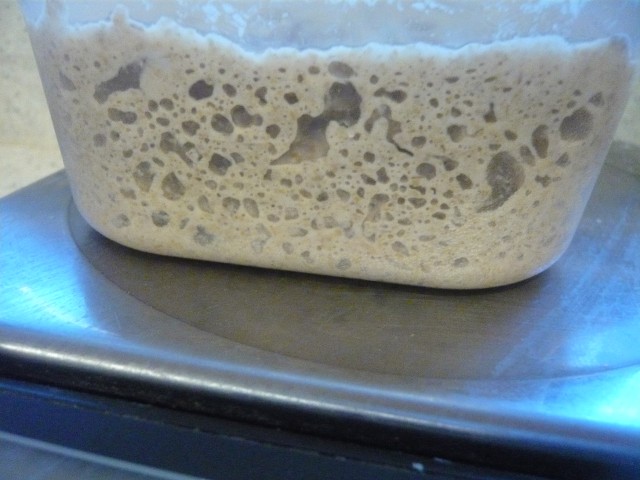
It should be responsive to feedings and have pleasant yeasty sour smell. The total investment in time is about 10-15 minutes each day and 245g in flour. For the bread starting at 8:00 AM on Saturday, first make a levain.
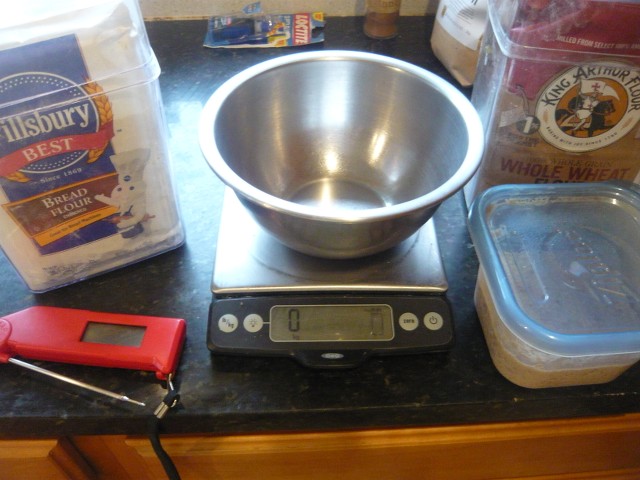
Levain:
Starter 50g
Bread (strong) flour 200g
Whole wheat flour 50 g
Water 85-90F 200g
Mix in a bowl with a spoon until sticky and uniform. Cover and leave at room temperature until 3:00 PM.

Bread:
Levain 360g
Bread flour 740g
Whole wheat flour 60g
Water 85-90F 620g
Mix with machine or by hand until flour is mostly incorporated and allow to rest for 15 minutes for the flour to hydrate. Add in and mix to combine:
Salt 21g (1T and 1 t of kosher salt)
Instant dry yeast 2g (1/2 t)
Note, the pictures I’m using also have toasted sesame seeds 60g added just because that was what I happened to be making.
Allow the bread dough to sit covered and every 30 to 60 minutes give it a stretch and fold using a bowl scraper. I do this rotating the bowl clockwise, 12 and 6 then 3 and 9. This will help build gluten development and give air to the yeast.
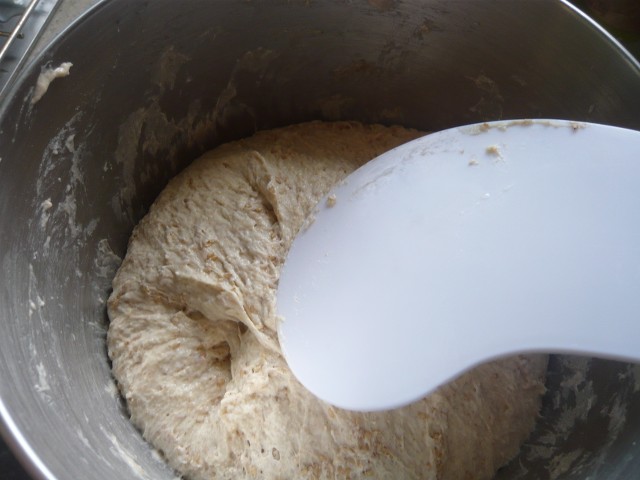
In my kitchen, I continue this stretch and fold every 30 to 60 minutes until 7-8 PM. The bread dough at this point should be fully risen, bouncy and full of air. It should have more than doubled (if using a Kitchen-Aid bowl, it will be near the top).
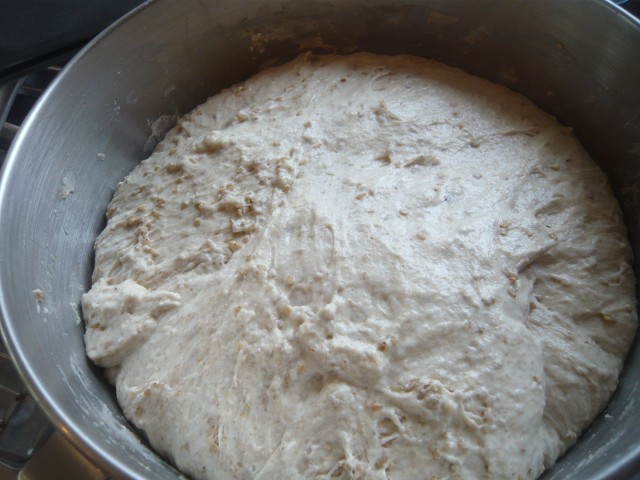
Prepare two covered casserole dishes (or one large Dutch oven) by buttering generously the bottom of each. Scrap the dough out onto a well-floured counter and divide in half for two loaves. Dust the top of the dough with flour as it will be very sticky at this point. Gather the dough into a ball turning the edges into the center of the blob of dough (lightly dust with flour as needed). Practice will make handling slack wet doughs easier. Place dough balls in casseroles seam down, cover and put in fridge overnight. It’s not necessary to try to drop the dough ball into a hot casserole. The next morning (Sunday) preheat oven to 475F (245C).
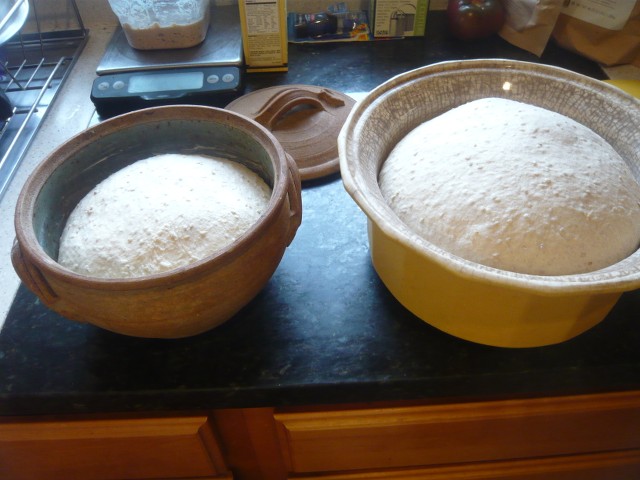
Slash (or snip with scissors) each dough ball to about half an inch (1.5 cm). The dough will deflate slightly but should come back with a strong oven spring.
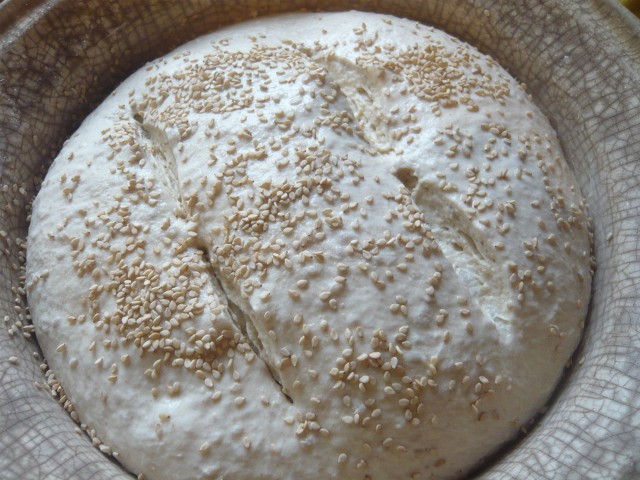
In the bottom third of the oven, put in both casseroles. Bake covered for 30 minutes then remove the covers and bake for an additional 20 minutes. Turn out bread carefully to cool for at least one hour on a wire rack.
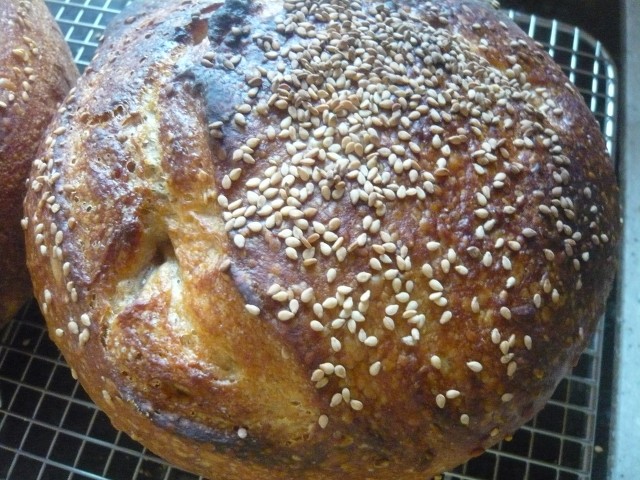
Enjoy buttered bread or toast with Sunday breakfast! If you made two loaves, give one away. If someone asks what type of bread this is, tell them it is a, “hybrid sourdough, rye starter, no knead, Dutch oven, cold fermented, part whole grain loaf”.
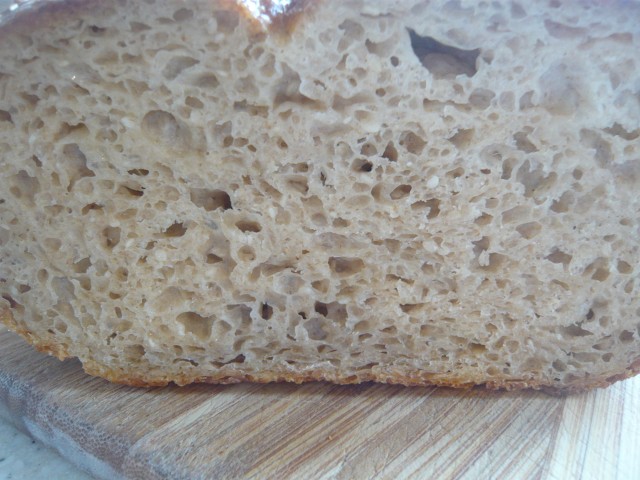
What about the starter? On Sunday remove 90g then add back 70g each of flour and water. Continue removing and feeding until next weekend. There are many possible variations from this base recipe.

